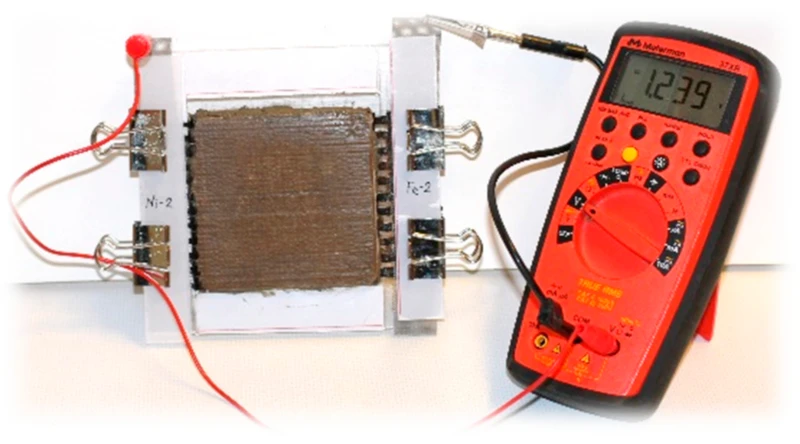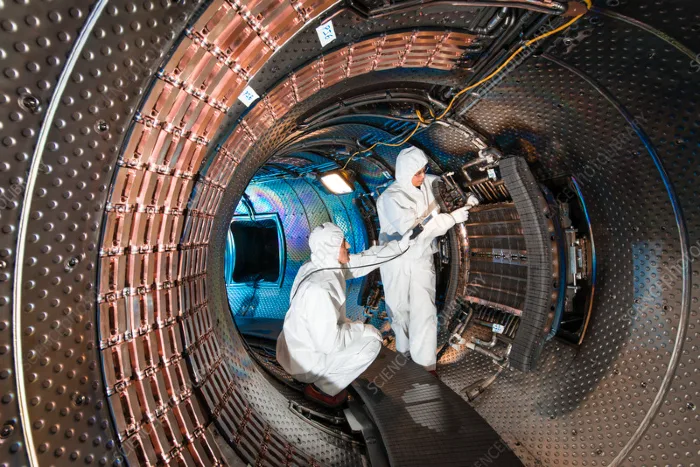Something astonishing has emerged from the labs of Chalmers University in Sweden recently that could revolutionize the concrete jungles that dominate our urban landscapes.
Imagine a world where the very structures that provide us shelter also serve as colossal power banks, storing and supplying energy. This isn’t a snippet from a science fiction novel; it’s the potential future of urban development, thanks to the ingenuity of civil engineers who have successfully embedded conductive fibers into cement, transforming ordinary buildings into large-scale batteries.
Concrete: A Carbon Culprit Turned Energy Innovator
Concrete, the backbone of urban infrastructure, has long been vilified for its environmental footprint, contributing up to 9% of all anthropogenic carbon emissions. However, this narrative may change with the introduction of rechargeable concrete batteries, a concept that not only challenges the conventional view of buildings as mere structures but also presents a formidable ally in the battle against climate change.
The Mechanics of a Concrete Revolution

The brains behind this revolutionary idea, Dr. Emma Zhang and Professor Luping Tang, have reimagined the traditional concrete mix by integrating short carbon fibers to enhance its conductivity and toughness. They’ve also introduced a metal-coated carbon fiber mesh, with iron and nickel serving as the anode and cathode, respectively. This novel design significantly outperforms its predecessors in energy density, marking a tenfold improvement and introducing the world to the first rechargeable version of a concrete battery.
Dr. Zhang articulates the significance of their work: “This particular idea that we have developed — which is also rechargeable — has never been explored before. Now we have proof of concept at lab scale.”
A Modest Start with Grand Ambitions
While the current energy density of these concrete batteries may not turn heads in the lithium-ion market—boasting a modest 7 watthours per square meter or 0.8 watthours per liter—their true value lies in the sheer volume of concrete in modern buildings. This innovation could enable the storage of considerable energy amounts, heralding a new era where buildings are not only places of refuge but also key players in energy management.
Beyond the Blueprint: Applications and Implications

The potential applications of this technology are as diverse as they are impactful. From powering LEDs to ensuring connectivity in remote locales and safeguarding infrastructure against decay, the possibilities are vast. Dr. Zhang envisions a synergy with solar panels, where concrete batteries could power monitoring systems for highways or bridges, detecting structural issues like cracks or corrosion early on.
Yet, the road ahead isn’t without its obstacles. Matching the battery’s lifespan to the century-long durability of concrete structures and devising efficient recycling methods are among the challenges that await. Despite these hurdles, the transformative potential of integrating energy storage capabilities into the world’s most ubiquitous building material cannot be overstated.
A Parallel Pursuit: Supercapacitors and Beyond
This innovation isn’t in isolation. Parallel research at MIT has seen engineers concoct a mix of cement, carbon black, and water to create supercapacitors capable of energy storage within building foundations, further expanding the horizon of sustainable building technologies.
More To Discover
- Lego’s Environmental Pivot: The Company Is Facing The Harsh Realities of Sustainable Plastics And Taking A Stand Against Greenwashing
- The Chia-Chair: Redefining Furniture as Living Ecosystems
- Flatpacked Forests: Ikea’s Timber Controversy and the Flaws in FSC Certification
- The Future of Our Cities: Powered by… Toilet Water?
Published in the journal Buildings, these findings not only showcase the versatility of concrete as a medium for innovation but also underscore a collective move towards a future where every building not only shelters but also powers our lives.
As Professor Tang aptly concludes, “We are convinced this concept makes for a great contribution to allowing future building materials to have additional functions such as renewable energy sources,” the narrative of concrete is being rewritten from a symbol of urban sprawl to a beacon of sustainable innovation.





















